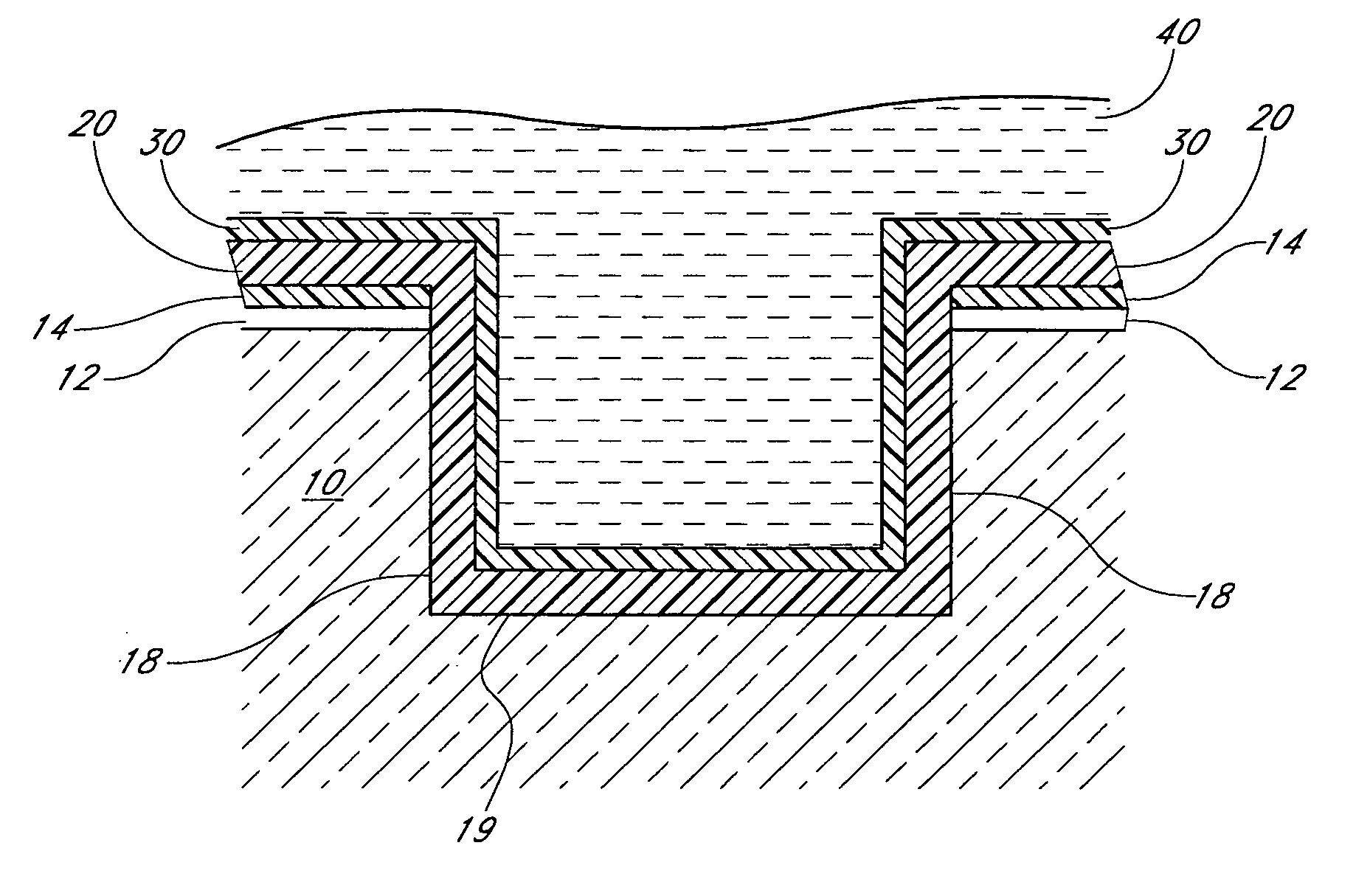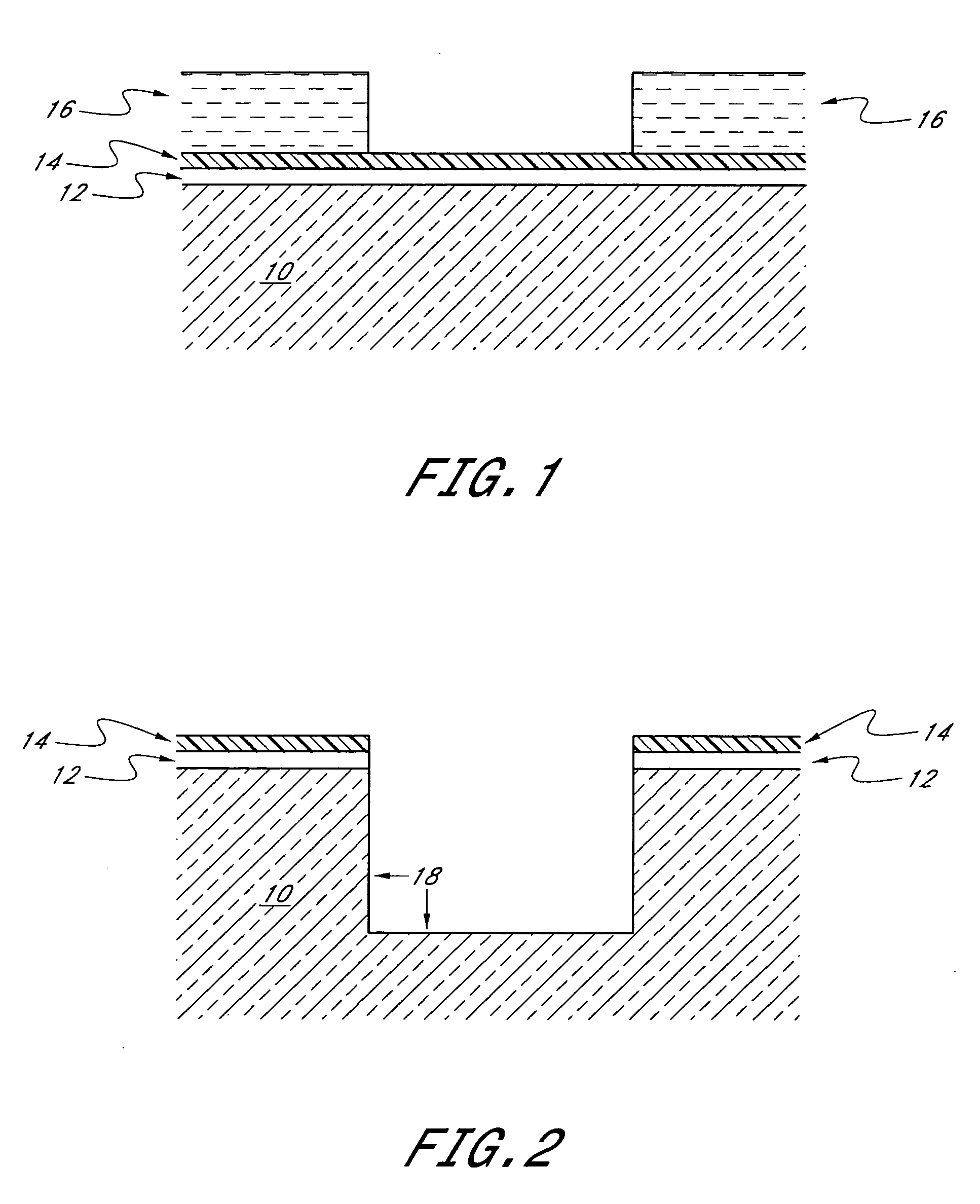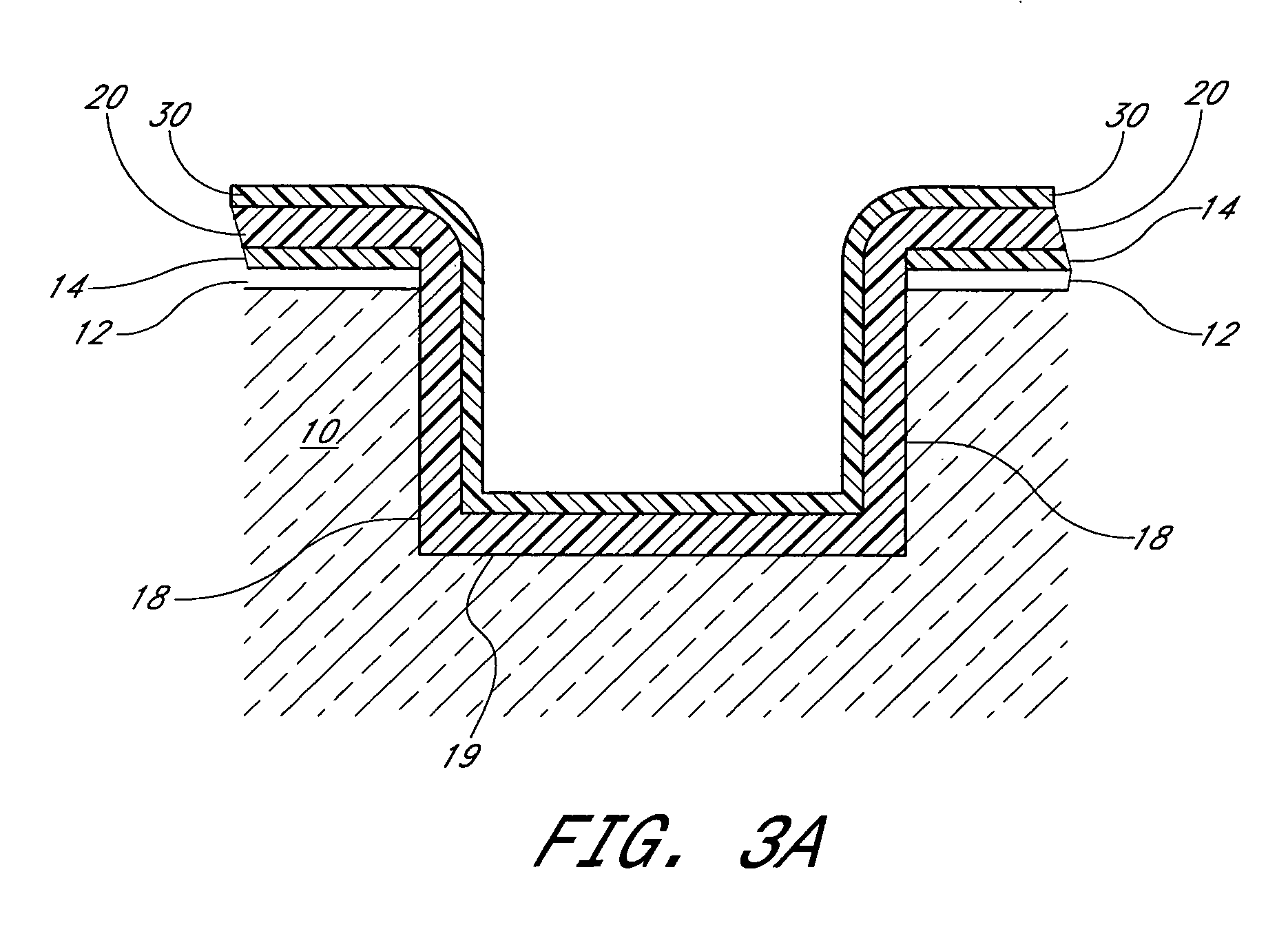Liner for shallow trench isolation
a technology of trench isolation and liner, which is applied in the direction of basic electric elements, electrical equipment, semiconductor devices, etc., can solve the problems of trench wall damage, significant problems for ic designers, and manufacturers of integrated circuits facing ever decreasing feature sizes and scaling and insulation between components
- Summary
- Abstract
- Description
- Claims
- Application Information
AI Technical Summary
Benefits of technology
Problems solved by technology
Method used
Image
Examples
Embodiment Construction
[0025] Shallow trench isolation (STI) trenches in dynamic random access memory devices are typically lined with a silicon nitride layer. However, silicon oxide formed from a spin-on dielectric (SOD) precursor has been found to adhere poorly to conventional barrier materials, such as stoichiometric silicon nitride, Si3N4. However, a nitrogen-poor material will not effectively protect the trench and the active area of the bulk silicon from damage from processing.
[0026] In part, the adhesion problem is due to poor re-bonding, which makes the interface between the silicon oxide and the silicon nitride weak. During the densification process, the SOD precursor bonds with the walls of the surrounding material to form a blended interface which provides a stable isolation structure. During the densification, the weakest bonds, those between silicon and hydrogen, are broken down first. When a silicon-rich surface is provided as an underlayer for the formation of a SOD layer, more silicon is ...
PUM
| Property | Measurement | Unit |
|---|---|---|
| temperature | aaaaa | aaaaa |
| temperature | aaaaa | aaaaa |
| temperature | aaaaa | aaaaa |
Abstract
Description
Claims
Application Information
 Login to View More
Login to View More - R&D
- Intellectual Property
- Life Sciences
- Materials
- Tech Scout
- Unparalleled Data Quality
- Higher Quality Content
- 60% Fewer Hallucinations
Browse by: Latest US Patents, China's latest patents, Technical Efficacy Thesaurus, Application Domain, Technology Topic, Popular Technical Reports.
© 2025 PatSnap. All rights reserved.Legal|Privacy policy|Modern Slavery Act Transparency Statement|Sitemap|About US| Contact US: help@patsnap.com



